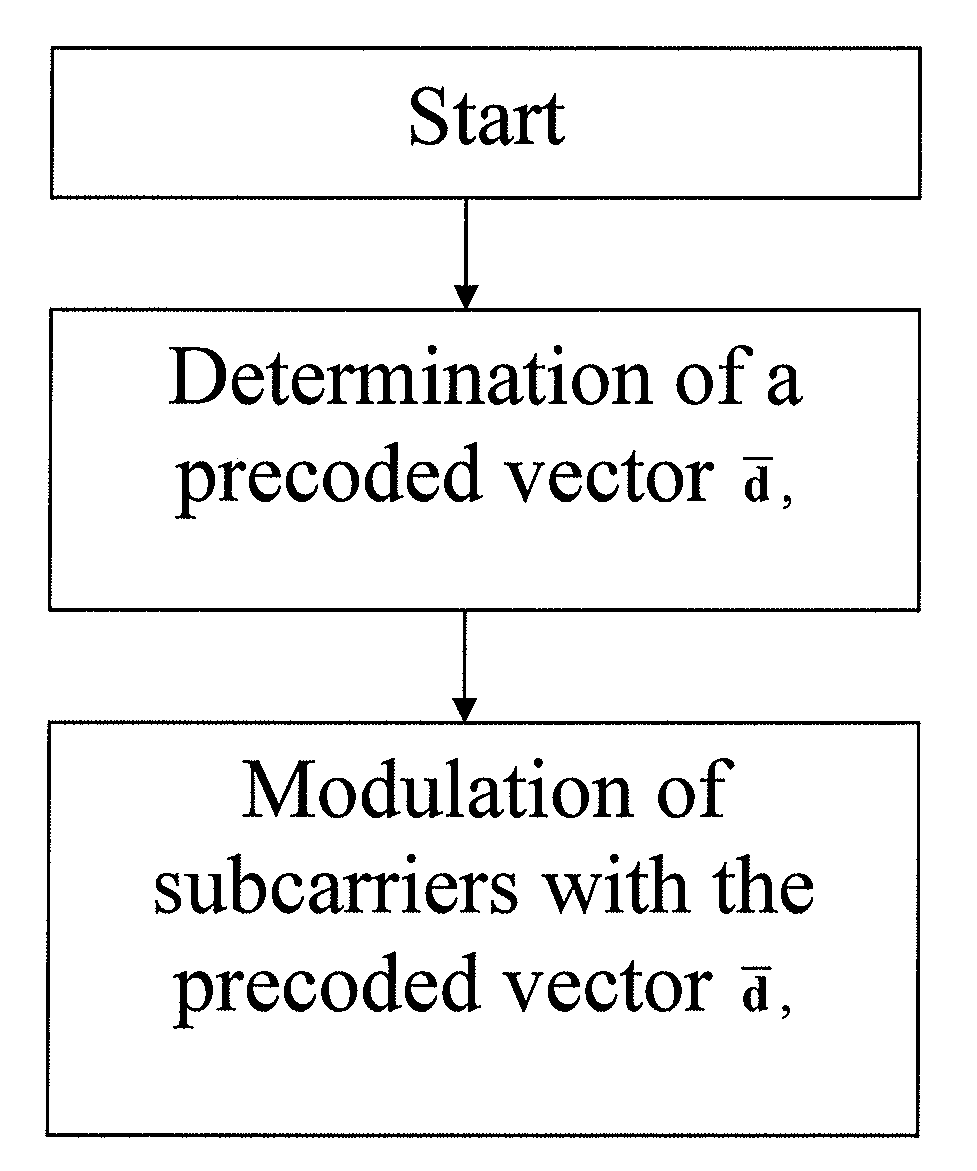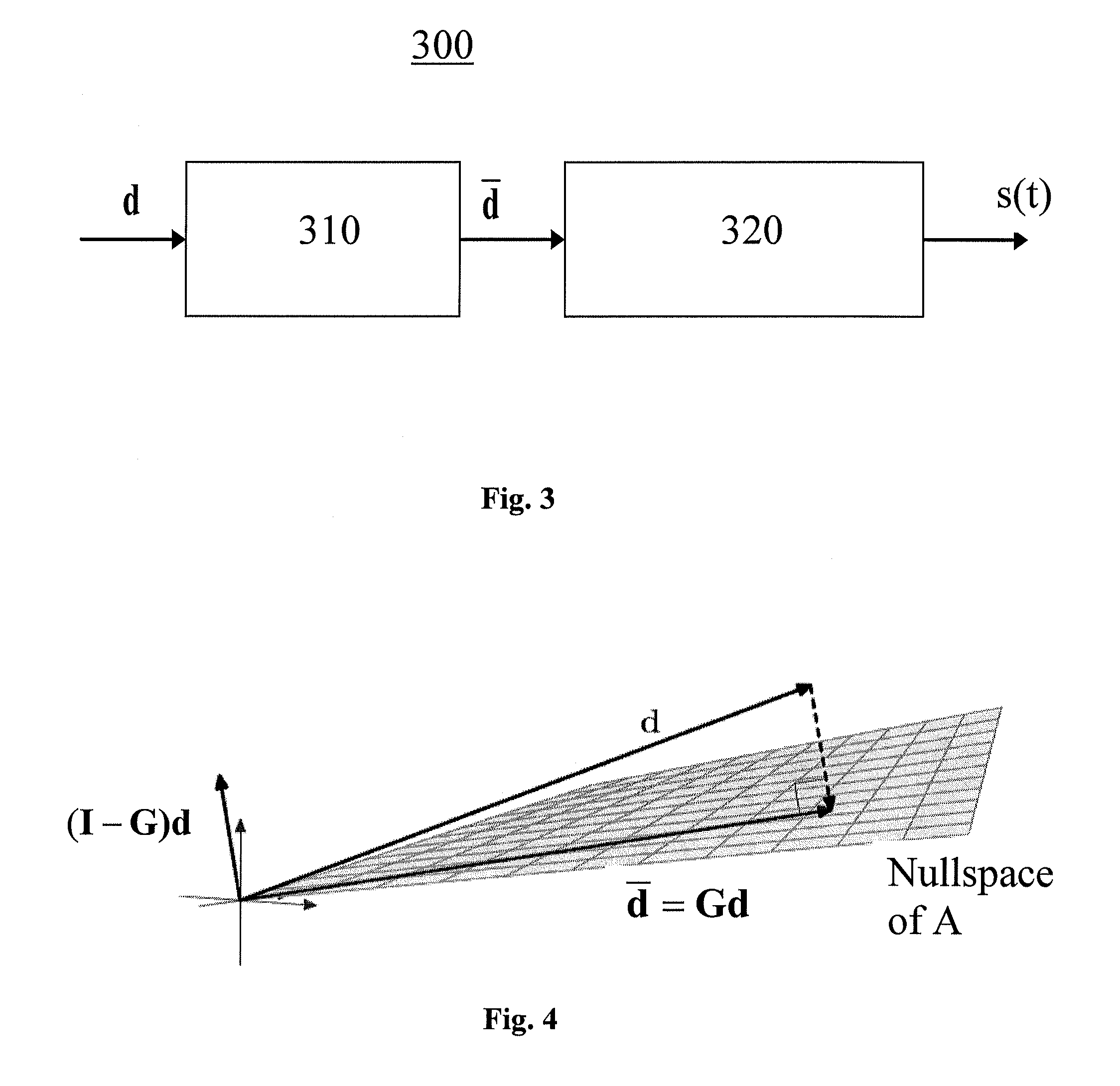Spectral shaping of multicarrier signals
a multi-carrier and signal technology, applied in the field of spectral shaping of multi-carrier signals, can solve the problems of inability to meet the requirements of out-of-band emission in a standard, interference to adjacent frequency bands, and problematic out-of-band emissions, and achieve low out-of-band and in-band emission, good emission suppression, and small error-rate loss
- Summary
- Abstract
- Description
- Claims
- Application Information
AI Technical Summary
Benefits of technology
Problems solved by technology
Method used
Image
Examples
Embodiment Construction
[0050]The following embodiments are applicable on essentially any multicarrier system, but for illustrations purposes will be explained by using an OFDM system. However, the embodiments are not limited for use in this specific system, but can be implemented in essentially any multicarrier system as is clear to a person skilled in the art.
[0051]The multicarrier signal z(t) to be generated and transmitted is of the baseband equivalent form:
z(t)=∑isl(t-T)(eq.1)
[0052]Here, 1 / T is the symbol rate, being a rate at which data symbols are transmitted. The symbol interval T is typically the length of a time interval during which a data symbol vector is transmitted. Thus, a new multicarrier symbol is transmitted every T seconds.
[0053]Furthermore, in a reference multicarrier system, i.e. a system not employing any of the aspects of the embodiments, si(t) is:
si(t)=∑k=1Kdk,ipk(t),(eq.2)
[0054]where dk,i are data symbols and pk(t) are subcarriers. Data symbols are here complex-valued scalars taken...
PUM
 Login to View More
Login to View More Abstract
Description
Claims
Application Information
 Login to View More
Login to View More - R&D
- Intellectual Property
- Life Sciences
- Materials
- Tech Scout
- Unparalleled Data Quality
- Higher Quality Content
- 60% Fewer Hallucinations
Browse by: Latest US Patents, China's latest patents, Technical Efficacy Thesaurus, Application Domain, Technology Topic, Popular Technical Reports.
© 2025 PatSnap. All rights reserved.Legal|Privacy policy|Modern Slavery Act Transparency Statement|Sitemap|About US| Contact US: help@patsnap.com



